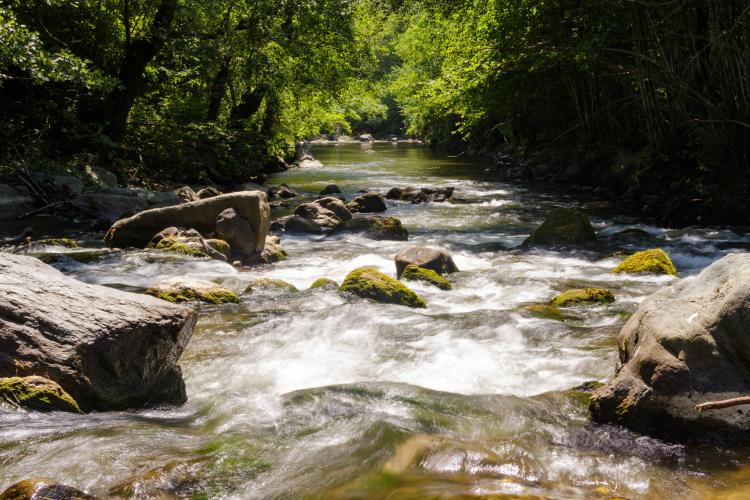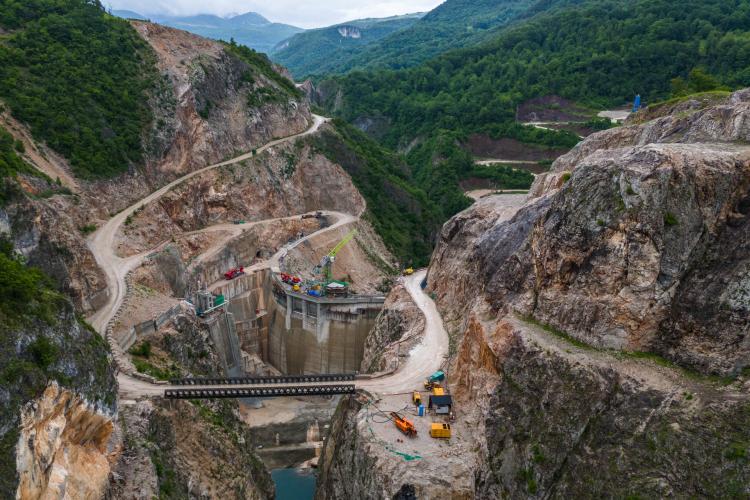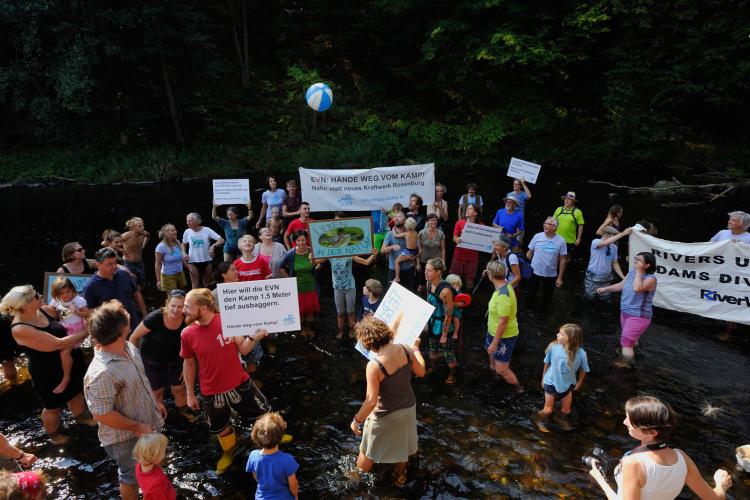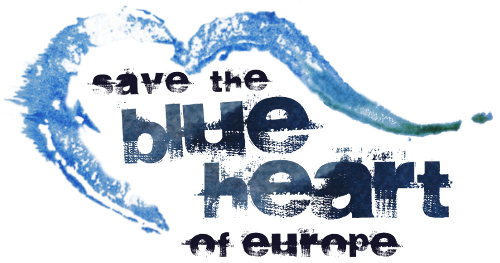




++More than sixty volunteer scientists from nine countries, explored the hidden life of the Sarantaporos River, the “big brother” of Europe’s last free-flowing river, the transboundary Aoos/Vjosa River ++
9 July 2024, Athens/Tirana/Radolfzell/Vienna - From 28 June to 5 July 2024, a multidisciplinary team of scientists from Greece, Albania, Austria, Germany, Italy, Slovenia, Romania, Switzerland and the USA, worked together to carry out extensive field research on the Sarantaporos River, a tributary of the Aoos, united under a common mission: to bring the whole Aoos/Vjosa River catchment under a common protection status by creating a Transboundary Wild River National Park, that would be unique in Europe.
More than sixty scientists, accompanied by journalists, photographers, activists, and artists, were hosted at the village of Vourbiani, in the Mastorochoria region, Municipality of Konitsa, at the heart of Northern Pindos. The researchers explored more than 50 km of river and streams, revealing their rich mosaic of life. Working in groups, the scientists studied fish, birds, plants, butterflies, grasshoppers, benthic macroinvertebrates, mammals, bats, physicochemical and hydromorphological characteristics of the river, while two social scientists observed and assessed participants' motives. In the upcoming months, the experts will assess their valuable findings and prepare a final report by the end of the year, which will be delivered to Ministries, regional authorities, as well as local communities.
“In general, people forget that rivers are not just stretches of water, as they form networks and very rarely do we have whole river networks saved today. With the Aoos/Vjosa system, including the tributaries, we have a unique chance in Europe to save a whole river network that drains about 7000 sq. km. of catchment area.” said Gabriel Singer, Fluvial Ecosystem Ecologist, University of Innsbruck.
The new scientific data will reinforce the recent designation of the largest part of the Sarantaporos catchment area as a Protected Natural Formation and Protected Landscape by the Ministry of Environment and Energy. The Ministerial Decision, which was issued a few days before the start of the Scientific Week, set out the development conditions and restrictions on activities within the protected area, prohibiting, inter alia, the construction of dams and hydroelectric power plants, including Small Hydropower Plants (SHPs). Unfortunately, this positive development does not relieve Aoos and its tributaries from the threat of SHPs since several projects are planned outside the recently designated protected area, while others are already at an advanced licensing stage.
“Αlthough the new regulations rule out the construction of approximately 15 SHPs in the Sarantaporos catchment area, about 20 projects could still be legally constructed in its stretches. The inclusion of the whole Aoos catchment area under a uniform strong protection status will safeguard its free-flowing waters from the expansion of hydropower. This step is urgently needed to achieve protection for the entire Aoos/Vjosa catchment by establishing the much-anticipated Transboundary Wild River National Park.” said Dimitris Papageorgiou, Local Coordinator & Project Manager, MedINA.
The next step entails upgrading the protection status of the area to a National Park by expanding the boundaries of Northern Pindos National Park towards the Greek-Albanian border. This will connect this protected area with the neighbouring Vjosa Wild River National Park to establish the first Transboundary Wild River Park in Europe, Aoos/Vjosa.
Joint Press Release by MedINA, EcoAlbania, EuroNatur and Riverwatch














